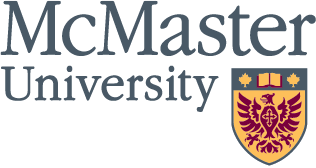McMaster opens new $22-million nuclear research facility

[img_inline align=”right” src=”http://padnws01.mcmaster.ca/images/cyclotrondoor.jpg” caption=”McMaster University officially unveiled today its newly expanded Nuclear Research Building, a new cyclotron facility and improvements to the McMaster Nuclear Reactor (MNR) Building: facilities which are now available for the world’s leading nuclear scientists and engineers. Nuclear sciences and engineering received $22-million from the federal and provincial governments in 2009 as part of the Knowledge Infrastructure Program. The money was used to upgrade physical infrastructure, expand isotope research and production capacity, and enhance research and education facilities for the nuclear industry and health care sectors.”]McMaster University officially unveiled today its newly expanded Nuclear Research
Building, a new cyclotron facility and improvements to the McMaster Nuclear Reactor
(MNR) Building: facilities which are now available for the world's leading nuclear
scientists and engineers.
Nuclear sciences and engineering received $22-million from the federal and
provincial governments in 2009 as part of the Knowledge Infrastructure Program. The
money was used to upgrade physical infrastructure, expand isotope research and
production capacity, and enhance research and education facilities for the nuclear
industry and health care sectors.
“This investment has reinforced McMaster's position as one of the world's top nuclear
science and engineering research universities and significantly enhances our innovation
and education goals,” says Patrick Deane, president of McMaster. “This will also enable
the university and our researchers to make a real difference in the lives of many people
within our own community.”
A new facility houses a 10-ton, $2-million cyclotron which will produce PET scan
medical isotopes. McMaster intends the facility to primarily be used for the development
of new drugs for the early diagnosis of diseases such as cancer and Alzheimer's. The
facility will be able to produce imaging isotopes every day in the facility, where can be
immediately delivered to a local hospital and used for the patients who need them most.
“Our Government has invested in innovation and knowledge infrastructure to set the
foundation for economic prosperity,” said Gary Goodyear, Minister of State for Science and Technology. “This project has not only
created jobs for people in our community, but it also provides infrastructure that will
benefit McMaster University for years to come.”
In addition, the funding provided for extensive renovations and upgrades to the Nuclear
Research Building, to accommodate and support new laboratories, research space and
education for new faculty members, researchers and graduate students. The new
McMaster building will play host to the Centre for Probe Development and
Commercialization, a private sector government-funded not-for-profit enterprise
whose funded goal is research, development and commercialization of new molecular
imaging tools for disease treatment and diagnosis.
“This is a proud moment for our community, to have this world class upgraded facility
to improve McMaster's research and training for both today and the years to come,” said
Ted McMeekin, MPP for Ancaster-Dundas-Flamborough-Westdale.
“Today's announcement reaffirms our strong commitment to McMaster and its cutting-
edge research,” said Sophia Aggelonitis, Minister of Revenue and MPP for Hamilton
Mountain. “Not only did this investment bring jobs to our community, but it will
improve the lives of people around the world.”
The funding also provided major maintenance in the McMaster Nuclear Reactor building,
potentially extending the working life of this valuable research and education resource.
MNR provides enough radioisotopes to treat 1000 cancer patients ever single week and
is used by researchers all over the world who perform studies in geochronology, date
ancient artifacts and study new kinds of crystals and materials. The reactor supports the
mining and exploration sectors and tests the engine turbine blades of commercial
aircraft in North America.

